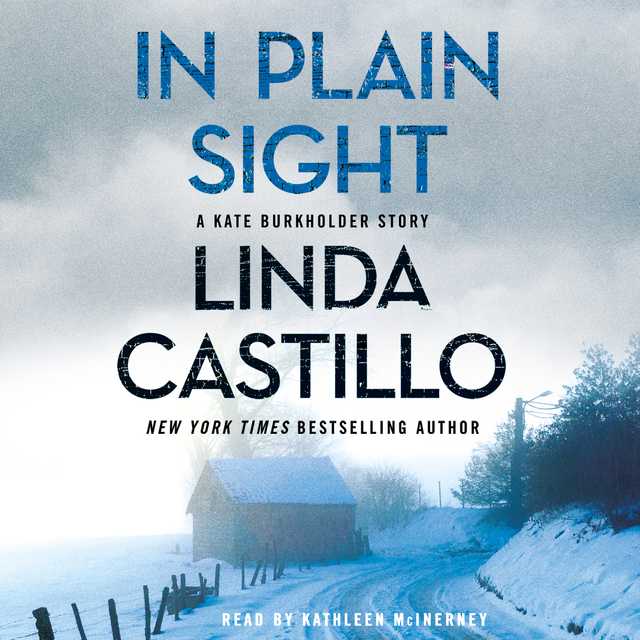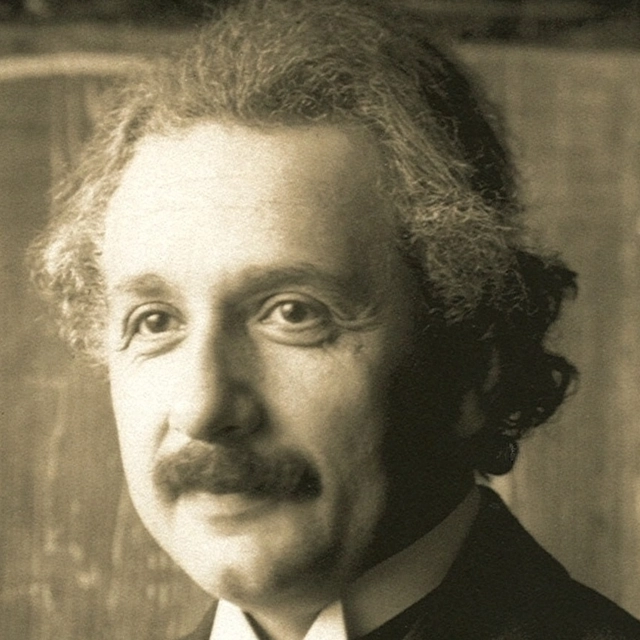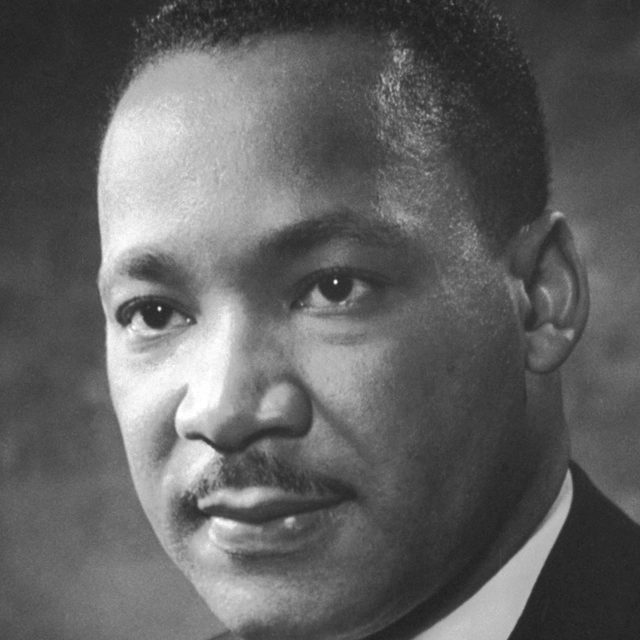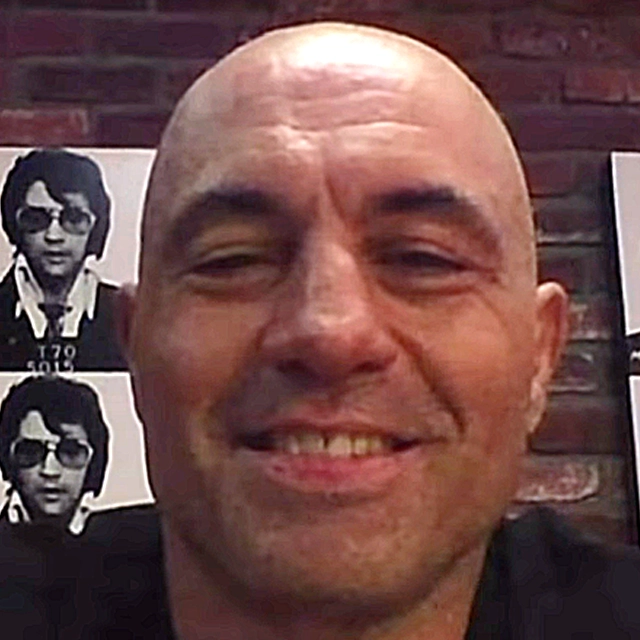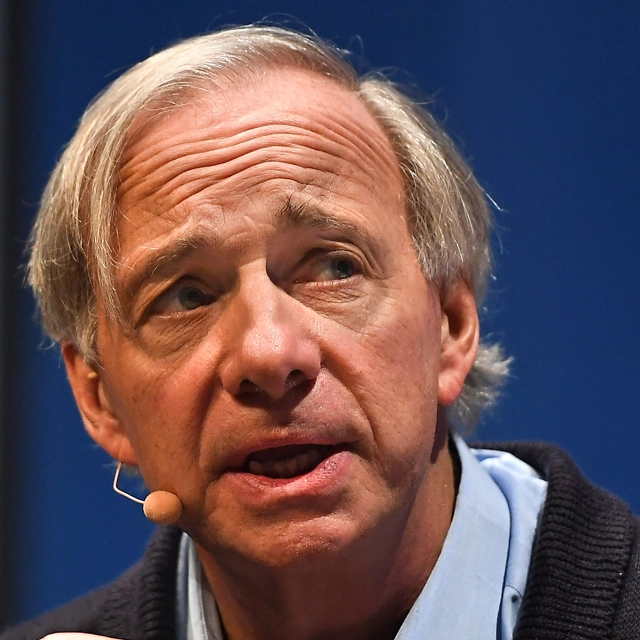Shot All to Hell Audiobook Summary
Shot All to Hell by Mark Lee Gardner recounts the thrilling life of Jesse James, Frank James, the Younger brothers, and the most famous bank robbery of all time.
Follow the Wild West’s most celebrated gang of outlaws as they step inside Northfield’s First National Bank and back out on the streets to square off with heroic citizens who risked their lives to defend justice in Minnesota.
With compelling details that chronicle the two-week chase that followed–the near misses, the fateful mistakes, and the bloody final shootout on the Watonwan River, Shot All to Hell is a galloping true tale of frontier justice from the author of To Hell on a Fast Horse: The Untold Story of Billy the Kid and Pat Garrett, Mark Lee Gardner.
Other Top Audiobooks
Shot All to Hell Audiobook Narrator
Johnny Heller is the narrator of Shot All to Hell audiobook that was written by Mark Lee Gardner
Mark Lee Gardner is the author of Rough Riders, To Hell on a Fast Horse and Shot All to Hell, which received multiple awards, including a Spur Award from Western Writers of America. An authority on the American West, Gardner has appeared on PBS’s American Experience, as well as on the History Channel, AMC, the Travel Channel, and on NPR. He has written for National Geographic History, American Heritage, the Los Angeles Times, True West, and American Cowboy. He holds an MA in American Studies from the University of Wyoming and lives with his family at the foot of Pikes Peak.
About the Author(s) of Shot All to Hell
Mark Lee Gardner is the author of Shot All to Hell
More From the Same
- Author : Mark Lee Gardner
- To Hell on a Fast Horse
- Rough Riders
- The Earth Is All That Lasts
- Publisher : HarperAudio
- Abraham
- American Gods [TV Tie-In]
- Dead Ringer
- House of Sand and Fog
- Prey
Shot All to Hell Full Details
| Narrator | Johnny Heller |
| Length | 7 hours 34 minutes |
| Author | Mark Lee Gardner |
| Category | |
| Publisher | HarperAudio |
| Release date | July 23, 2013 |
| ISBN | 9780062293367 |
Subjects
The publisher of the Shot All to Hell is HarperAudio. includes the following subjects: The BISAC Subject Code is History, Midwest (IA, IL, IN, KS, MI, MN, MO, ND, NE, OH, SD, WI), State & Local, United States
Additional info
The publisher of the Shot All to Hell is HarperAudio. The imprint is HarperAudio. It is supplied by HarperAudio. The ISBN-13 is 9780062293367.
Global Availability
This book is only available in the United States.
Goodreads Reviews
Steve
January 02, 2015
I really enjoyed Gardner's earlier effort on Billy the Kid, and figured I'd go back to Outlaw Country and read some more. I might have liked this effort even more, but that's at least in part fueled by the subject. Billy, wild young man that he was, doesn't, to my mind, have the lethal and calculating gravitas of Jesse James and his crew. The James - Younger gang were a product of the brutal guerrilla wars in Civil War Missouri and Kansas. These wars had levels of barbarity that could be compared to modern day Bosnia, with eye-for-an-eye decapitations, burnings, shootings, hangings, American style. And memories ran long. The James - Younger band operated much like a military unit, with robberies planned with precision and fearless flair. These robberies were executed on what was a generally favorable landscape filled with sympathetic friends and family. But the railroads fought back, and it eventually led to the unplanned death of Jesse's step-brother due to a fire bombing of the James' house. After that, a number of names entered the James' Book of Vengeance. One collaborator (and neighbor) was soon gunned down by Jesse, and Alan Pinkerton (head of the detective agency responsible), was stalked by Jesse in Chicago. Another organizer in the attack on the James' house was attorney Samuel Hardwicke, who must have certainly felt a marked man afterwards. He would eventually move to what must have seemed a safer Minnesota.Gardner speculates, with some reason, that the otherwise inexplicable Northfield raid was, at least in part, a mission of vengeance, with Jesse also staking out Hardwicke. But, like the attempt on Pinkerton, Jesse wanted to look his man in the eye before pulling the trigger. The opportunity never presented itself, and there were banks to rob, even up north. The disaster of the Northfield raid -- which Garder lays out in impressive detail -- cannot be overstated. The James - Younger band were apparent (and arrogant) in their dusters, big horses, and big guns. The residents knew, upon sight, these guys were sketchy. One has to wonder that even if the gang had pulled off the robbery, if they would have been able to escape cleanly. As it turned out, a big gun battle erupted, with a few courageous citizens firing back. Before long, two bandits were bleeding out, and a brave bank employee had his brains blown out by Frank James. Cole Younger, in an equally cold blooded act, shot a fleeing man in the head. What follows is, arguably, the real heart of the book: the escape. And this is where Gardner excels, as he shows the hunted and hunted, in an amazing mile by mile journey. The word was out, and Minnesotans quickly converged, but the James gang proved slippery, and lucky, negotiating their way through an unfamiliar landscape, and coming up with quick and convincing lies when necessary. At least up to a point, and the then the gang split apart, with Frank and Jesse mysteriously disappearing, later to show up back in Missouri. The Youngers -- all wounded -- would have a last stand, but amazingly survive and escape the hangman as well. Jesse vowed he would never be caught, and that's the way it worked out, though not the way he envisioned. Frank? Frank was smart. He engineered, via political allies, an acquittal in Missouri. He never spent a day in jail for his crimes. He should have hung for them. Especially for the murder in Northfield, Minnesota.
Steven
September 01, 2013
The James Brothers and the Younger Brothers. Some of the best known outlaws of their time. Train robberies and bank robberies galore. And the ghastly failure of their Northfield Minnesota raid--when they were routed by civilians during their robbery. The author of this book, rather immodestly but on target, notes that (Page 3): "The following narrative is the most accurate account of the nineteenth century's most famous robbery and manhunt." And in the second chapter, we get nice character sketches of the brothers, including a good discussion of the real differences between Jesse and Frank James. This volume is a nice rendering of this event. It begins by looking at the background of the raid--including an account of the early lives of the Younger (Cole, Jim, and Bob) and James (Jesse and Frank) Brothers. Both Youngers and James rode with bushwhacking Confederate irregulars such as Bloody Bill Anderson and William Quantrill. After the war, the brothers often worked together in gangs, which included others as well. They carried out both train robberies and bank heists. Overall, they were fairly successful. However, one of their gang members "ratted them out," making it potentially perilous to continue working in their traditional area.What to do next? Jesse James suggested a raid into Minnesota, where none would be looking for them. Once in Minnesota, gang members (including other members than the brothers). They finally happened upon a robbery in Northfield. After scouti9ng the bank, they went into action. Two major problems: a time lock mechanism that thwarted them and the reaction of the citizens of Northfield. Many residents grabbed forearms and began shooting at gang members-wreaking havoc on the gang. After this? A detailed description of the chase as posse after posse chased the Younger and James brothers (other gang members were hors de combat). The James Brothers and Younger Brothers suffered separate fates. The book concludes with a description of the lives of the key actors--Northfield residents, gang members, and others involved in the robbery and subsequent chase.This is a very fine history of the development of the gang and its greatest fiasco. We learn a great deal in the process.
Jim
April 21, 2017
Shot all to Hell: Jesse James, the Northfield Raid, and the Wild West's Greatest Escape, is an excellent addition to the literature surrounding the life of Jesse James and the history of the James-Younger Gang. Very well written, its primary focus is on events leading up to their raid on the First National Bank of Northfield, MN, and the factors that influenced their decision to conduct a raid so far from their Missouri base. It does not claim to be a full biography of James or the James-Younger gang, but it does include enough of their history to put their actions into proper context. The book is not perfect for reasons I will mention below, but is well researched, and exceedingly readable.Jesse James and the James-Younger Gang are one of those historical Rorschach tests that usefully expose the biases of different segments of society. Whether one views the gang as heroes, anti-heroes, or villains often is a function of life experience, education and economic circumstance. For many the gang represents a rejection of political correctness, and those viewed as elites trying to dictate how people should lead their lives. For others, they are an embodiment of the "Lost Cause" interpretation of the Civil War; a committed band of unreconstructed rebels, refusing to concede the end of their dream of an independent confederacy based on states’ rights and slavery. For still others, they represent an American version of the Robin Hood myth (for which there is no evidence). And lastly, for some, particularly descendants of their victims, or those who intellectually reject the notion that robbery and murder are in any way romantic, the James-Younger gang were simply killers, unable to get past Confederate defeat, compelled to continue the terrorism they practiced as bushwhackers under William Quantrill and Bloody Bill Anderson during the Civil War.For me, they are closer to the latter description. The more I read about them, the less I am inclined to view them as anything other than criminals. I recognize they are products of their experiences, but that does not make them admirable. That isn't to say however, that I don't find them fascinating. I think they do embody an aspect of the Civil War South that I think is important to understand. In states like Missouri and Kansas, the Civil War was a guerilla fight, one which pitted neighbor against neighbor in the most brutal way imaginable. In this it was much like the Revolutionary war as experienced in the southern back country - brutal and personal. The legacy of that fight is with us today. Other than my general interest in virtually anything historical, I also have a personal interest in the James-Younger gang. One of the employees shot by them in the failed raid on the First National Bank in Northfield, MN - Alonzo Bunker - is a branch on my family tree. He was the son of my Great-Great-Great Grandfather. Growing up, we always heard stories about the relative who was shot by Jesse James, and my Great Grandfather who I knew as a child, had met him. Bunker wasn't actually shot by James, but by gang member Charlie Pitts; still it was close enough to the truth to pique my interest growing up.Most books on Jesse James and the James-Younger gang tend to take an admiring view of them. Authors invested in "Lost Cause" mythology are more likely to take a charitable view of their criminality, often excusing it as a justifiable response to some wrong they suffered, such as the botched Pinkerton raid on their home that killed their brother Archie, and severely wounded their mother. Other authors, who have a romantic view of the West and Western lore, seem unable to resist the lure of the "brave and daring" Jesse James. This has combined to make the outlaws pop culture heroes. Rarely are movies made about them, for example, that do not depict them as heroes or anti-heroes. A great example of this is the well-made but severely flawed "Long Riders," produced in 1980. All of this makes it difficult to get to the truth about them and their activities.There are a few even-handed treatments of them that try to get to the truth about their actions, and that attempt to put them in a political, cultural, economic, and psychological context. One of the best of these is Jesse James: Last Rebel of the Civil War by T.J. Stiles, who does a nice job of digging into the political climate in post war Missouri that allowed the James-Younger gang to operate with virtual impunity.The subject of this review, "Shot all to Hell: Jesse James, the Northfield Raid, and the Wild West's Greatest Escape," by Mark Lee Gardiner, falls somewhere in between these types. As the title of the book suggests, with its focus on the escape of Jesse and Frank James, rather than the capture or killing of the other six gang members, the author sometimes betrays a sneaking admiration for the outlaws. On the other hand, he doesn't shy away from highlighting their brutality, detailing some of the murders committed by them during and after the years after the Civil War. And, it is clear he admires the townspeople of Northfield who did what no one else had done, fought back against the gang. He movingly highlights the heroics of some of the townspeople, particularly Joseph Lee Heywood who was killed by Frank James after he repeatedly refused to open the bank's safe.Northfield celebrates this event to this day, with its annual “Defeat of Jesse James Days,” one of the largest town festivals in Minnesota.Gardiner is an excellent writer. The book, written in a narrative style, was at times a real page turner. His research is detailed, and seems spot on, illuminating many aspects of the Northfield raid that I had never read about before. For example, I had always known bystander Nicholas Gustafson was killed in the street outside the bank; shot in the head. What I did not know was that he did not die right away. In fact, he was able to get up, walk away, speak with others, and clean his wound. He actually died several days later as his brain began to swell. Most depictions of the event have him lying dead in the street. It was these kinds of details which really elevated the book. His chapters detailing the raid itself and the subsequent manhunt are among the best I have read. And he does an excellent job of teasing out interesting portraits of some of the lesser known actors in this drama, including 16-year-old Oscar Sorbel, the "Paul Revere of the Northfield Raid," whose persistence eventually led to the killing of gang member Charlie Pitts, and capture of Bob, Jim, and Cole Younger.On the other hand, the portions of the book detailing the early days of the James's and Youngers as Confederate bushwhackers during the Civil War, and their early criminal career, weren't as detailed. It is adequate to set up the events leading up to the Northfield Raid, but not much more. This doesn’t detract much from the power of the book however. Gardiner is not attempting an exhaustive biography of the outlaws and so only provides what is needed to put the Raid itself into some context. He is also not explicitly attempting to put them into a larger political or social context. He does provide some of this though as an organic part of the narrative. What he chooses to highlight and incidents he describes do help one form a rudimentary political and psychological profile of the gang. A good example of this is the gang's alleged reaction when they found out Adelbert Ames, a Union General, Reconstruction Governor of Mississippi, and son-in-law of the hated Benjamin Butler was living in Northfield, and had considerable holdings with the bank. The desire for sweet revenge against one who they believed had forced Yankee rule on the South and negro equality on the country may have become one reason for choosing Northfield as the target.There were problems with the book. Occasionally the narrative dragged a bit, particularly when recounting the gang’s robbery of the train at Rocky Cut near Otterville, MO. He occasionally apes conventional wisdom, such as his dismissal of Ulysses S. Grant’s presidency as a scandal ridden failure. There is much recent scholarship that casts serious doubt on that assertion. And, as I noted earlier, he occasionally betrays a sneaking admiration for the outlaws that I find unnecessary. Not enough to cast doubt on the objectivity of his narrative, but worth mentioning. Overall though this is fine reading, a book any history nerd would enjoy.
Ethan
August 03, 2013
Jesse James is perhaps one of the most famous criminals in American history. With the assistance of his notorious gang of outlaws, James sealed his position in the legends of western folklore. In Shot All to Hell, author Mark Lee Gardner details the gang's final showdown, as they attempted to rob the First National Bank of Northfield, Minnesota. Gardner provides unique insights into the gang's motivations. It turns out, that the group is comprised of mostly ex-confederates. With that in mind, it is easy to understand why they would want to rob a northern bank. On top of the giant blow the heist would cause the Northerners, the giant sum of money that the gang would acquire would allow the James Brothers to settle down and end their outlaw ways. But as most heists go, this one doesn't go as plan. Despite the gang's confidence in their actions, they never expected the bankers to fight back. Throughout the book, Gardner chronicles the actions of the gang and the group of citizens determined to defeat the notorious criminals. This book could have easily been a rehash of historical facts, regurgitated as fresh revelations. Fortunately, Gardner eschews the pitfalls of other historical books, writing with a quick prose and surprisingly vibrant wit. He sheds a new light on several aspects of the James gang, remaining objective in both is reporting and observations. This books reads as a fast paced, historical, western, managing to remain both factual and entertaining. At under 300 pages, Shot All to Hell is the perfect summer read for those looking for a smart, quick, alternative to the standard fare.
Jill
September 11, 2013
4stars alone for the chapter "The Hottest Day Northfield Ever Saw," which documented the actual robbing of the bank; I found the rest of the book to be somewhat short on what turned cold-blooded killers into pop idols and the stuff of American legend. Absent are any of the countless letters Jesse wrote to newspapers all over the country indicting society, the law, the economy as motivation for his life of crime; none of the press's articles are included to show the shift in public sympathies from the victims of "The Raid" to the perpetrators. Gardner was onto something at the onset of the book, giving us brief background & veiled impetus for the James/Younger foray into Minnesota & the history books. He just didn't follow the thread completely through.
Mark
December 07, 2019
In the summer of 1876, the James/Younger gang robbed a bank in Northfield, Minnesota. A spectacular shootout commenced, that the gang did not expect, followed by a breath-taking escape and ending with a massive manhunt. I love reading stories about the Old West and this one really delivers. I learned a lot about that time period and about the gang members themselves. I will be reading more Gardner. Also excellent on audio.
Miriam
December 06, 2013
Read my full review here: http://mimi-cyberlibrarian.blogspot.c... Shot all to Hell by Mark Lee Gardner is about the robbery of the Northfield, Minnesota bank by the Jesse James and the Cole Younger gangs in 1876. This is not my usual book choice, but I had a personal reason for reading it. Our teenaged great grandmother was there on that day, and her story has been part of our family lore for all these generations.My son called me all excited one day. "Mom," he said. "They're talking about the Northfield robbery on the radio." Sure enough. There was a new book about the robbery and the author was on NPR. Now, you must know that our whole family had arrived in Northfield from all over the country just prior to the radio report to bury our mother and grandmother. We had walked around downtown Northfield and looked at the spot where Great Grandmother Alice Finney had hidden during the robbery. We had driven out to Stanton, the tiny village where our family lived, and we had clocked the distance from where Alice and a friend first saw the bank robbers until she got into Northfield and the hardware store where the owner hid them from the robbers and the gunfire. Then, my sister and I did some research, collaborated the family lore with the actual history, and wrote up the story as one of three stories in a picture book that was illustrated by my son. As you can imagine, I read Shot All to Hell with a great interest. There is a lot that is mythological about Jesse and Frank James, and Cole, Bob, and Jim Younger. Several movies have been made and many books written. Gardner has used the 1876 Northfield Minnesota attempted bank robbery as the centerpiece of the history of the gang. Prior to reading the book, I didn't know how the men got to be outlaws. During the Civil War, there were bands of mercenaries or bushwhackers, as they were called, that struck fear in the hearts of the people who lived along the Missouri/Kansas border. There were murders, assassinations and massacres during the war. It was all about slavery, of course. Jesse James and his brother as well as the Youngers were part of the group of men who followed General Quantrill in those brutal raids. Over the years, Jesse and Frank James became folk heroes of sorts and their adventurous lives were followed closely by the press. They continued robbing trains and banks, sometimes with Cole Younger and his brothers, all the while living fairly ordinary lives as farm owners and settled citizens in Missouri.Gardner tells particularly of the fateful day that they decided to rob the bank in Northfield, Minnesota. It was harvest time and this was a prosperous bank. The men teamed up with the Younger brothers and a few other men, and tried to rob the bank just like they had robbed other banks and trains. What they didn't know was that this was a little town that was going to fight back. A fierce battle ensued on the streets of Northfield as well as in the bank. A couple of the outlaws and a couple of townspeople were killed as well as the bank's clerk. Our great grandmother saw the whole thing peeking out the second-floor window of the hardware store next door.Most of the robbers escaped but they were followed by posses of several hundred men who combed southern Minnesota in search of them. This part of the history is really the most interesting. After several days the Youngers were captured and put in jail in southern Minnesota. Jesse and Frank made it all the way back to Missouri. Amazingly, after Frank was captured, he was acquitted in a trial--his jurors not wanting to convict someone they considered to be a Civil War hero. He lived to be an old man. Jesse was killed by a spiteful gang member seeking a reward. The Northfield raid was the beginning of the end of their careers.As you can imagine, the lore of Jesse James has remained prominent in the history of the little town of Northfield. Every year the raid is reenacted as a part of a huge community festival. The town is very proud of their part in history. Gardner tells a compelling story.It reads like a great adventure novel, with the outlaws hiding by day, riding by night, stealing horses, begging food, torn, dirty, and bedraggled. There were sightings everywhere as the men made their way across the bottom of Minnesota into South Dakota, Iowa and then into the safer territory of Missouri. The adventure is a real page turner, and the odd thing is, the reader cheers on the outlaws. You want them to get away.Reading the book makes my great grandmother's story all the more intriguing. Most of her newspaper obituary in the1940s told of her grand adventure seeing Jesse James rob the Northfield Minnesota bank. Shot All to Hell is out in hardback right now but the paperback comes out in June. it is an Indie Next List Selection. A reviewer called it a meticulously researched history...the kind of compelling narrative that all historians should emulate.An interesting review in the New York Times: http://www.nytimes.com/2013/09/22/boo...Mark Gardner interviewed on NPR: http://www.npr.org/2013/08/17/2123743... Mark Lee Gardner's website: http://www.songofthewest.com/home.htmlPosted by Miriam Downey at 8:24 PM
Michael
October 12, 2013
Loved this book!!! Read it in 2 days. Couldn't put it down. I knew nothing about the James-Younger gang previous to reading this book. This was a great story, written perfectly. And I am now very interested in reading other books on my "to read" shelf because the people were mentioned in this book. Notably Bloody Bill Anderson and William Quintral. I have read a bit of Old Western type history and was familiar with a few names and events mentioned in this book. I will definitely be reading this book again!! I would recommend it to anyone.
Mark
September 10, 2015
Fascinating story of the legendary Jesse James and company. I was surprised that so much of their story took place in Clay County and Ray County, Missouri. Their first back heist was in Liberty, MO, where Joseph Smith was imprisoned. But the James and Younger families moved into the are after the Mormons had already been driven out. Interesting story, though, and well told.
victor
September 19, 2013
Not usually my style of book for reading but this is a good exception. Excellent narratives of the hunt for members of the James gang. Good background biographies of the main characters, and smooth flow to the reading that maintains a good level of suspense.
Shane Callahan
March 02, 2020
Enjoyable, quick readQuick, fun, informative read. Covers all the basic facts thoroughly. Doesn't dive too deep but still an enjoyable boo about the gang
Theo
July 27, 2017
The REAL story. Would make a great mini-series.
Kim Korich
July 18, 2017
Entertaining ReadIf you are interested in the James/Younger gang and their exploits this will be of interest. History buffs will enjoy.
Ashley
August 27, 2013
Great read even if you aren't a history buff. Gardner brings alive the time and place in such a way that makes the story live again.
Audrey
April 08, 2022
Shot All to Hell by Mark Lee Gardner is the true story of the raid and robbery of the First National Bank in Northfield, Minnesota committed on September 7, 1876 by the James-Younger Gang. I first read about this infamous raid in T.J. Stiles' biography of Jesse James, The Last Rebel of the Civil War, and was fascinated by the events that took place. The townspeople rebelled hard against the robbers, immediately defending the bank and "shooting them all to pieces," killing two of the eight gang members. Jesse James, Frank James, Cole Younger, Jim Younger, Bob Younger, and Charlie Pitts escape, beginning a manhunt of immense chaos. Gardner did an excellent job of telling this story. I loved how he added so many quotes from the law, townspeople, government figures, possemen in pursuit of the James-Younger Gang, and the robbers themselves. A very compelling read. It's insane that the James brothers escaped after splitting from the Younger brothers and Charlie Pitts who would soon be captured by the law within two weeks (and Pitts killed in the resulting shootout). Jesse and Frank James spent weeks on the run with sometimes thousands of people on the hunt for them, starving and injured and often on foot. I also have to ponder how Frank James, upon the assassination of Jesse in 1882, was able to lead an entirely peaceful life thereafter for thirty years. He wasn't condemned for the murder of Northfeild bank cashier Joseph Heywood, nor any robbery or murder he ever committed. He starred in the "Cole Younger and Frank James Wild West Show" and charged people to see the James childhood home in Missouri. I mean, really? I can't wrap my head around it. This period of time in U.S. history is deeply fascinating to me, as well as the age of the outlaw, so thanks to Gardner for providing a good account of one of the most astonishing tales of escape to come out of the "wild west."
ivelived1000lives
May 01, 2020
Well that was awesome.I bought this book at the Jesse James Bank Museum in Liberty, Mo. Even though I am a history buff, I was never particularly interested in "Wild West history" and am not a big fan of western movies (noted exception: when Tarantino makes them). But the visit of this little museum put me in the mood and I took a chance. I'm glad I did.This book is obviously very well researched, and the author does a masterful job at describing the times and making you feel as if you were there. And one thing I learned: these movies are not as far-fetched as I would have thought. This true story has all the trappings of one, and you will experience the florid language, witness the bravado of citizens and outlaws alike, hear the dusters flapping in the wind and smell the gunpowder. This is a truly crazy story and made me think of another book I loved, Manhunt, about the hunt for John Wilkes Booth. If like me you are not too familiar with the James-Younger gang you will learn a lot. One aspect I found particularly illuminating is the way the author discusses the impact of the Civil War on these particular criminals, who not only witnessed but participated in some atrocities (at the tender age of 14 in Jesse's case) and felt humiliated at the end of the war to be considered second-class citizens because they had fought on the Confederate side (Missouri, I learned, had a particular stance on the whole amnesty thing). Not that it excuses their behavior, but it certainly explains some of it. I actually appreciated that the thieves were not glorified except when it comes to recognizing the superhuman stamina of the James brothers, which, I mean, can't be taken away from them (also those Younger brothers being shot in the mouth and the eye and popping right back up, movie-worthy I tell you!) Prepare to be entertained as well as educated.So thank you Mr Gardner for this interactive experience. I hope I can go back to Missouri and visit Minnesota some day to see some of these places for myself.
Brad
June 29, 2014
On September 7, 1876, eight men rode into the small town of Northfield, Minnesota. Their intention--to rob a bank. What happened next has been a part of Western lore ever since then.In Mark Lee Gardner's wonderful, meticulous book Shot All to Hell: Jesse James, the Northfield Raid, and the Wild West's Greatest Escape, we learn about everything there is to know about this robbery and the subsequent manhunt for the bandits. I've read books about Jesse James before, but this is so detailed and so well written that I was dazzled.This is not a biography of James or his brother Frank, or of the Younger Brothers (Cole, Jim, and Bob). We get sketches of their earlier lives, particularly how they rode with guerrillas during the Civil War, and how they pulled off the first daylight bank robbery in United States history. But the action really starts earlier in 1876, with a train robbery at Rocky Cut, Missouri. Gardner describes the events, and although no one knows for sure who was behind it, it is clear that the evidence points to the James Gang.Then why Minnesota for their next job? That state doesn't exactly suggest the Wild West, even in 1876. I was surprised to learn that the gang took the train there. They did look at other banks in Minnesota, but Gardner pinpoints the reason the First National in Northfield was chosen: "One of the bank's large investors was Adelbert Ames, a Union Civil War general and Radical Republican who until only recently had been Mississippi's governor. Ames had been derided by Mississippi Democrats as a "carpetbagger" and despised by Southern whites for his pro-black Reconstruction policies." But why Minnesota in the first place? Gardner speculates that the James boys may have been looking for revenge against Samuel Hardwicke, a Pinkerton agent who led a raid on the James homestead that killed their younger brother and maimed their mother. Jesse may have planned on assassinating Hardwicke.Once the robbery begins, Gardner's talents are evident, as he breaks it down almost second by second. It only lasted seven to ten minutes. What foiled the plot was the citizens' suspicions of the strangers in town to begin with, and then a clerk named Joseph Heywood, who refused to open the safe. He was shot dead in cold blood by Frank James (this is Gardner's supposition based on voluminous evidence--no one in the gang ever gave up Frank). Heywood was hailed as a hero, but of course today no business would expect a man to lay down his life for something like money.The Northfield citizens didn't lay down, pulling out their arms and shooting it out with the crooks. After the dust had settled, one other Northfield citizen was dead and two of the gang, Clell Miller and Bill Chadwell, were also dead. "According to one account, so many people wanted to see the dead robbers that their bodies were displayed for a short time in Mill Square, which became packed with gawkers, sheriffs and police officers from nearby towns, newspaper reporters, posse volunteers, and Northfield's own citizens, both children and adults."The rest of the book, a good chunk of it, concerns the escape and manhunt. Northfield telegraphed nearby towns, who formed posses. Gardner highlights the vanity and incompetence of two rivals police chiefs of Minneapolis and St. Paul, and the hesitation of some of the posses, once they realized they were chasing the most notorious outlaws in the country: "Fear of the robbers rattled quite a few of the men and boys who made up the posses. 'Many, of course, were there who started in the chase as they would go upon a chicken hunt,' commented one reporter, 'made brave by the excitement of the moment, but worse than useless in case of actual service.'"The remaining six outlaws made there way through unfamiliar Minnesota forests, yet somehow eluded capture, telling farmers that they were a posse themselves. But Bob Younger, badly wounded during the robbery, was slowing everyone down. The Youngers and Jameses separated, and eventually the Youngers were captured. Jim took a bullet in the mouth, and Charlie Pitts, who stuck with them, was killed.The James boys made their way into Iowa, and eventually into the safe haven of Missouri, where many regarded them as heroes. The Youngers would plead guilty to avoid the death penalty, and were sentenced to life in prison. Frank and Jesse James took different names and tried to live quiet lives, but went back to robbery, teaming up with the Ford brothers. Bob Ford would kill Jesse for the reward money. Frank, amazingly, never came to justice for the Northfield raid. To his dying day he maintained he had never been in the state of Minnesota.This book is a must for Wild West buffs, such as myself, and for general history readers, as it perfectly captures a time and place. I'll close with Gardner's summation: "Thanks to what...the dozens of dime novels that came later, his brother Jesse had become the most famous--and most popular--outlaw on the planet. And, somewhat ironically, a big part of that legendary status had come the defeat in Northfield. If nothing else, Jesse and Frank's wild ride through a thousand manhunters cemented their reputation as among the most remarkable and notorious outlaws to ever live."
Most Popular Audiobooks
Frequently asked questions
Listening to audiobooks not only easy, it is also very convenient. You can listen to audiobooks on almost every device. From your laptop to your smart phone or even a smart speaker like Apple HomePod or even Alexa. Here’s how you can get started listening to audiobooks.
- 1. Download your favorite audiobook app such as Speechify.
- 2. Sign up for an account.
- 3. Browse the library for the best audiobooks and select the first one for free
- 4. Download the audiobook file to your device
- 5. Open the Speechify audiobook app and select the audiobook you want to listen to.
- 6. Adjust the playback speed and other settings to your preference.
- 7. Press play and enjoy!
While you can listen to the bestsellers on almost any device, and preferences may vary, generally smart phones are offer the most convenience factor. You could be working out, grocery shopping, or even watching your dog in the dog park on a Saturday morning.
However, most audiobook apps work across multiple devices so you can pick up that riveting new Stephen King book you started at the dog park, back on your laptop when you get back home.
Speechify is one of the best apps for audiobooks. The pricing structure is the most competitive in the market and the app is easy to use. It features the best sellers and award winning authors. Listen to your favorite books or discover new ones and listen to real voice actors read to you. Getting started is easy, the first book is free.
Research showcasing the brain health benefits of reading on a regular basis is wide-ranging and undeniable. However, research comparing the benefits of reading vs listening is much more sparse. According to professor of psychology and author Dr. Kristen Willeumier, though, there is good reason to believe that the reading experience provided by audiobooks offers many of the same brain benefits as reading a physical book.
Audiobooks are recordings of books that are read aloud by a professional voice actor. The recordings are typically available for purchase and download in digital formats such as MP3, WMA, or AAC. They can also be streamed from online services like Speechify, Audible, AppleBooks, or Spotify.
You simply download the app onto your smart phone, create your account, and in Speechify, you can choose your first book, from our vast library of best-sellers and classics, to read for free.
Audiobooks, like real books can add up over time. Here’s where you can listen to audiobooks for free. Speechify let’s you read your first best seller for free. Apart from that, we have a vast selection of free audiobooks that you can enjoy. Get the same rich experience no matter if the book was free or not.
It depends. Yes, there are free audiobooks and paid audiobooks. Speechify offers a blend of both!
It varies. The easiest way depends on a few things. The app and service you use, which device, and platform. Speechify is the easiest way to listen to audiobooks. Downloading the app is quick. It is not a large app and does not eat up space on your iPhone or Android device.
Listening to audiobooks on your smart phone, with Speechify, is the easiest way to listen to audiobooks.

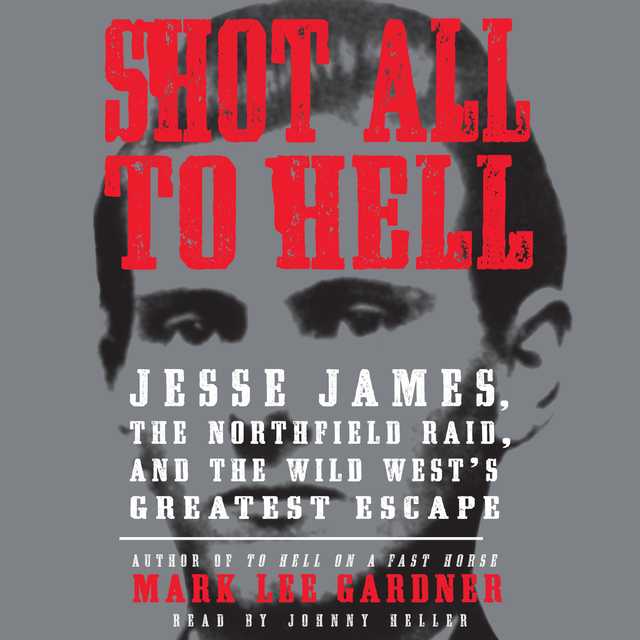










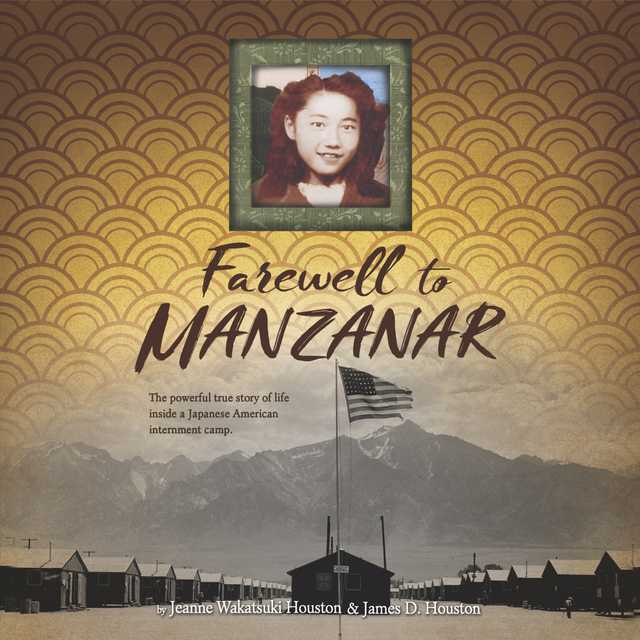



![Strong Darkness [Dramatized Adaptation]](https://speechify.com/audiobooks/wp-content/uploads/sites/29/2023/06/pr_eaudio_9781648804007_640px.jpg)
